Hyundai i10 VS CUPRA Tavascan – Specs, Efficiency & Price Comparison
Which model is the better choice – the Hyundai i10 or the CUPRA Tavascan? We compare performance (90 HP vs 340 HP), boot capacity (252 L vs 540 L), efficiency (4.90 L vs 15.20 kWh), and of course, the price (14600 £ vs 45600 £).
Find out now which car fits your needs better!
The Hyundai i10 (Hatchback) is powered by a Petrol engine and comes with a Manuel or Automatic transmission. In comparison, the CUPRA Tavascan (SUV) features a Electric engine and a Automatic gearbox.
When it comes to boot capacity, the Hyundai i10 offers 252 L, while the CUPRA Tavascan provides 540 L – depending on what matters most to you. If you’re looking for more power, you’ll need to decide whether the 90 HP of the Hyundai i10 or the 340 HP of the CUPRA Tavascan suits your needs better.
There are also differences in efficiency: 4.90 L vs 15.20 kWh. In terms of price, the Hyundai i10 starts at 14600 £, while the CUPRA Tavascan is available from 45600 £.
Compare all the key specs now and find out which model fits your lifestyle best!
Hyundai i10
The Hyundai i10 impresses with its compact design, making it an ideal choice for navigating through busy urban environments. Its interior is surprisingly spacious, offering drivers and passengers comfort beyond what one might expect from a city car. The model combines efficiency and practicality, making it an attractive option for those seeking both economy and functionality in their daily commute.
details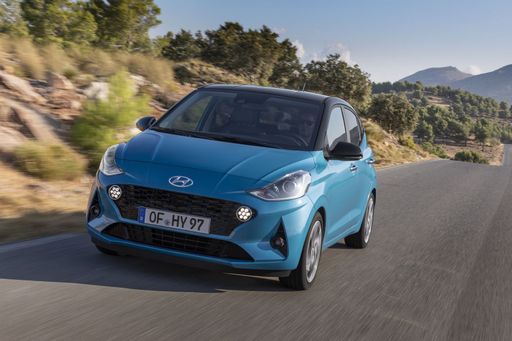 @ hyundai.news
@ hyundai.news
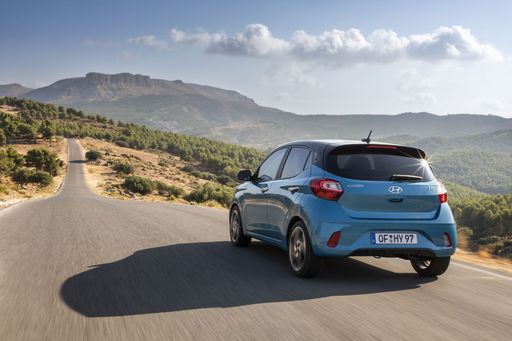 @ hyundai.news
@ hyundai.news
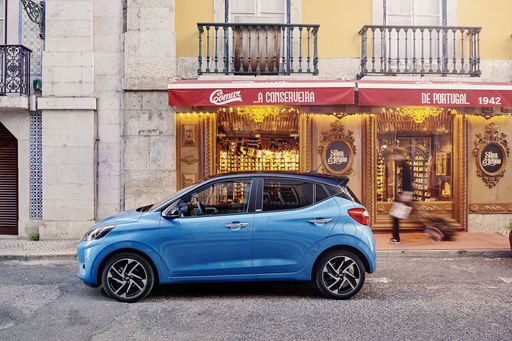 @ hyundai.news
@ hyundai.news
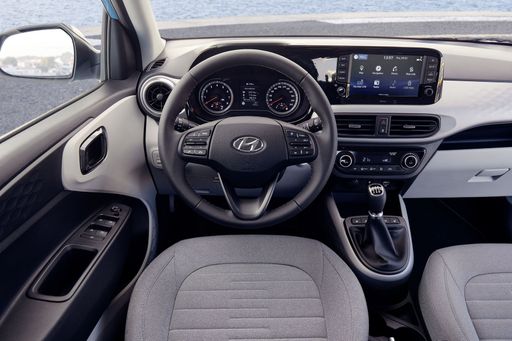 @ hyundai.news
@ hyundai.news
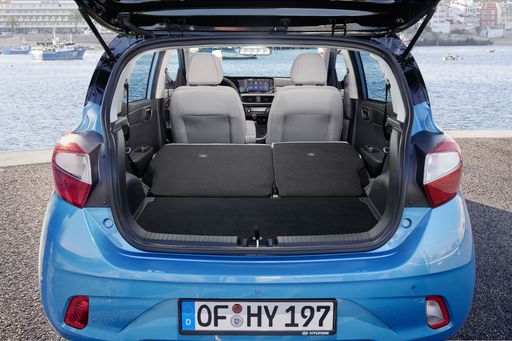 @ hyundai.news
@ hyundai.news
CUPRA Tavascan
The CUPRA Tavascan represents a bold step forward in the realm of electric vehicles with its striking design and dynamic performance. As the marque's first all-electric SUV, it combines athletic aesthetics with a commitment to sustainability. Inside, the vehicle offers a sophisticated and connected driving experience, ensuring that technology and comfort go hand in hand.
details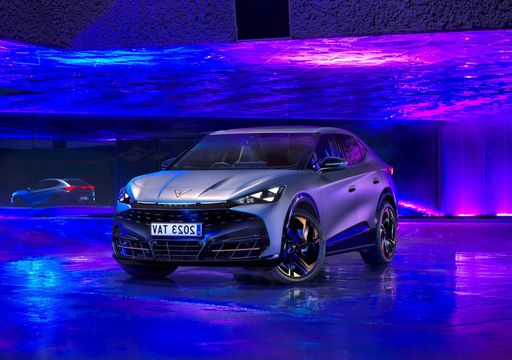 @ seat-mediacenter.com
@ seat-mediacenter.com
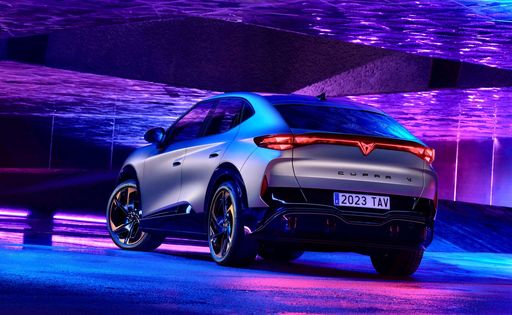 @ seat-mediacenter.com
@ seat-mediacenter.com
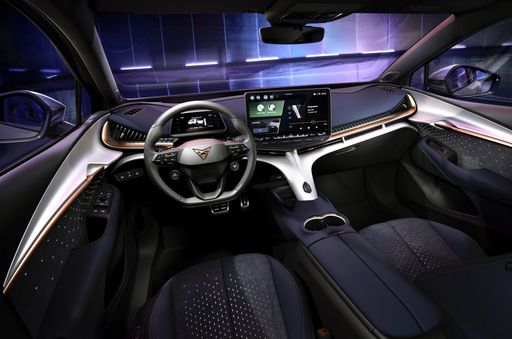 @ seat-mediacenter.com
@ seat-mediacenter.com

|

|
|
|
|
Costs and Consumption |
|
|---|---|
|
Price
14600 - 19000 £
|
Price
45600 - 49600 £
|
|
Consumption L/100km
4.9 - 5.5 L
|
Consumption L/100km
-
|
|
Consumption kWh/100km
-
|
Consumption kWh/100km
15.2 - 16.5 kWh
|
|
Electric Range
-
|
Electric Range
522 - 570 km
|
|
Battery Capacity
-
|
Battery Capacity
77 kWh
|
|
co2
110 - 124 g/km
|
co2
0 g/km
|
|
Fuel tank capacity
36 L
|
Fuel tank capacity
-
|
Dimensions and Body |
|
|---|---|
|
Body Type
Hatchback
|
Body Type
SUV
|
|
Seats
4 - 5
|
Seats
5
|
|
Doors
5
|
Doors
5
|
|
Curb weight
996 - 1099 kg
|
Curb weight
2178 - 2273 kg
|
|
Trunk capacity
252 L
|
Trunk capacity
540 L
|
|
Length
3670 - 3675 mm
|
Length
4644 mm
|
|
Width
1680 mm
|
Width
1861 mm
|
|
Height
1480 - 1483 mm
|
Height
1597 mm
|
|
Payload
344 - 423 kg
|
Payload
507 - 522 kg
|
Engine and Performance |
|
|---|---|
|
Engine Type
Petrol
|
Engine Type
Electric
|
|
Transmission
Manuel, Automatic
|
Transmission
Automatic
|
|
Transmission Detail
Schaltgetriebe, Automatisiertes Schaltgetriebe
|
Transmission Detail
-
|
|
Drive Type
Front-Wheel Drive
|
Drive Type
Rear-Wheel Drive, All-Wheel Drive
|
|
Power HP
63 - 90 HP
|
Power HP
286 - 340 HP
|
|
Acceleration 0-100km/h
11.4 - 18.4 s
|
Acceleration 0-100km/h
5.5 - 6.8 s
|
|
Max Speed
143 - 175 km/h
|
Max Speed
180 km/h
|
|
Torque
93 - 172 Nm
|
Torque
545 - 679 Nm
|
|
Number of Cylinders
3 - 4
|
Number of Cylinders
-
|
|
Power kW
46 - 66 kW
|
Power kW
210 - 250 kW
|
|
Engine capacity
998 - 1197 cm3
|
Engine capacity
-
|
General |
|
|---|---|
|
Model Year
2024
|
Model Year
2024
|
|
CO2 Efficiency Class
C, D
|
CO2 Efficiency Class
A
|
|
Brand
Hyundai
|
Brand
CUPRA
|
Hyundai i10
Introduction to the Hyundai i10
The Hyundai i10 has consistently proven to be a dependable and stylish companion for urban driving. Known for its compact design and efficiency, this hatchback offers a perfect blend of modern aesthetics and practicality, making it a popular choice for city dwellers and small families alike.
Performance and Efficiency
The Hyundai i10 is available with both manual and automatic transmissions, catering to various driving preferences. Engine power ranges from 63 to 90 PS, providing a versatile driving experience for both novice and seasoned drivers. The fuel consumption varies between an impressive 4.9 to 5.4 litres per 100 kilometres, fitting for those looking to minimise fuel costs while also reducing their carbon footprint.
Engine and Transmission
Equipped with a choice of 1.0-litre or 1.2-litre engines, the i10 offers up to 172 Nm of torque, ensuring lively performance. The models feature front-wheel-drive configurations, allowing for smooth handling and reliable road performance. The car excels in city driving but is equally capable on longer journeys.
Interior and Comfort
Despite its compact size, the Hyundai i10 does not compromise on interior space and comfort. It accommodates four to five occupants comfortably, offering sufficient legroom and headroom. Its flexible seating arrangement and a 252-litre boot make it ideal for both quick trips and weekend getaways.
Safety and Technology
Safety remains a priority with Hyundai, and the i10 is no exception. It comes equipped with multiple airbags, stability control, and advanced braking systems. Technology-wise, the i10 features a user-friendly infotainment system with smartphone connectivity, ensuring a pleasant and connected drive.
Design and Style
The Hyundai i10’s design is both modern and sleek, making it stand out in the compact hatchback segment. With a length ranging from 3670 to 3675 mm, a width of 1680 mm, and a height of 1480 to 1483 mm, the i10 strikes a perfect balance between style and functionality.
Affordable Pricing and Value
The i10 is available in several trims including the Select, N Line, and Prime, among others, with prices ranging from €16,990 to €22,190. Considering its features and low running costs — with monthly expenses estimated between €694 to €793 — the Hyundai i10 offers substantial value for those seeking an economical yet stylish hatchback.
Conclusion
The Hyundai i10 combines efficiency, modern design, and practicality in a compact package. Whether you are seeking a reliable city car or an economical daily driver, the Hyundai i10 is a strong contender worth considering in the compact car market of 2024.
CUPRA Tavascan
Introducing the CUPRA Tavascan: The Future of Electric SUVs
The automotive industry is witnessing a revolution, and at the forefront is the CUPRA Tavascan, an electric SUV that promises to reshape the landscape of sustainable driving. As a brand under the umbrella of the renowned SEAT, CUPRA has rapidly established itself with models that combine dynamic design with cutting-edge technology. Let us delve into the details of the Tavascan, an embodiment of innovation and performance.
Powertrain and Performance
The CUPRA Tavascan impresses with its electric powertrain offerings. It is available in two versions, catering to different driving preferences. With power outputs ranging from 286 to 340 PS, the Tavascan ensures an electrifying drive on both rear-wheel and all-wheel-drive configurations. Regardless of the choice, instant torque and seamless acceleration allow it to reach 0-100 km/h in just 5.5 to 6.8 seconds.
Under the hood lies a sophisticated 77 kWh battery pack, ensuring a driving range between 521 and 568 km on a single charge. The efficiency ratings are noteworthy, with energy consumption falling between 15.2 to 16.5 kWh/100 km, making it one of the more efficient options in its category.
Leading-Edge Technology and Features
The Tavascan is designed with the modern driver in mind, integrating state-of-the-art technology. Inside, drivers and passengers will experience a premium digital cockpit, where a large infotainment system, customisable ambient lighting, and cutting-edge connectivity options create a seamless blend of luxury and functionality.
In terms of safety and driver assistance systems, the Tavascan does not disappoint. It includes advanced features such as adaptive cruise control, lane-keeping assist, and traffic sign recognition, positioning it as a leader in automotive safety.
Sustainable Design and Practicality
The exterior design of the CUPRA Tavascan is striking, with aerodynamic contours that speak of its performance capabilities. Its aesthetic is both muscular and refined, underscoring CUPRA’s commitment to sporty elegance. The SUV's dimensions allow for a spacious interior, accommodating up to five passengers comfortably, alongside a generous 540-litre boot capacity.
Cost Efficiency and Environmental Impact
Operating costs are a critical consideration for any vehicle, and the CUPRA Tavascan excels in this department with monthly costs ranging from €1,280 to €1,424. The cost per kilometre also remains economical, thanks to its efficient energy consumption.
Further enhancing its appeal, the Tavascan proudly boasts a CO2 efficiency class of A, with zero direct emissions, reflecting CUPRA’s commitment to sustainability.
A Vision for the Electric Future
The 2024 CUPRA Tavascan embodies a bold vision for the future of automobiles. It combines state-of-the-art technology, outstanding performance, and an environmentally conscious footprint, setting new standards for electric SUVs. Whether you're an eco-conscious driver or a tech enthusiast, the Tavascan offers a compelling package that is hard to overlook.
The prices and data displayed are estimates based on German list prices and may vary by country. This information is not legally binding.
